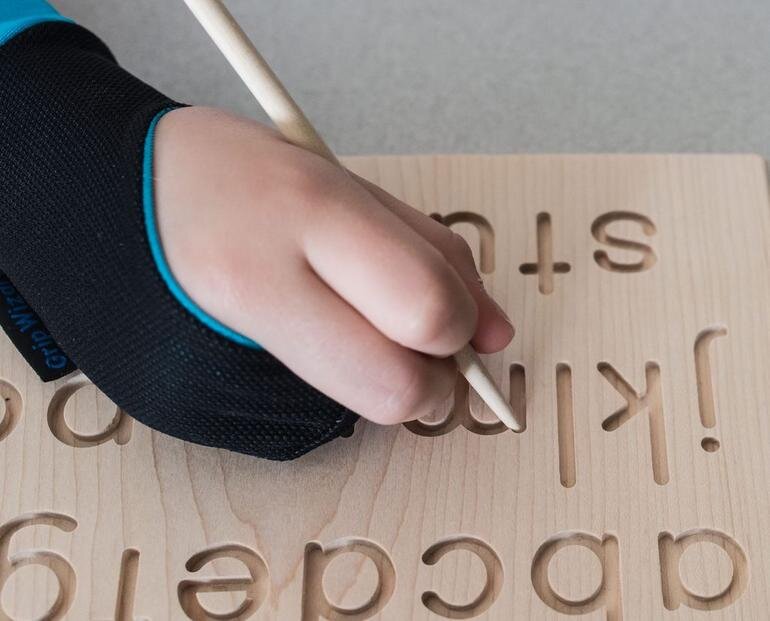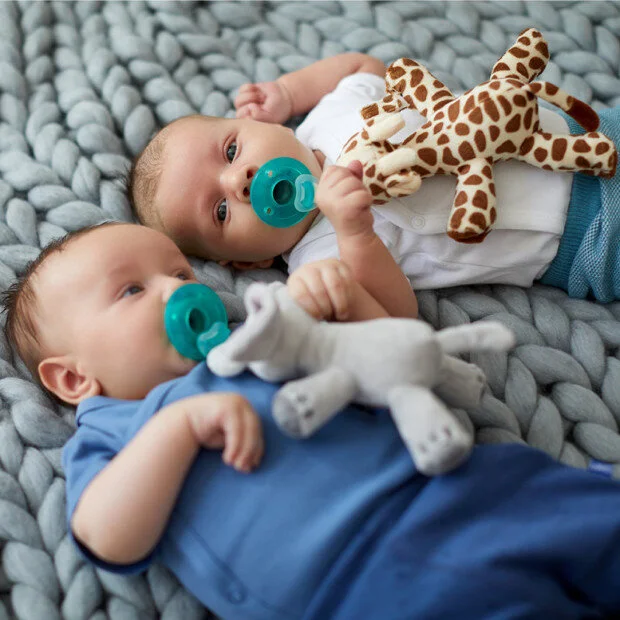How to help my baby develop their pincer grasp?
/It is thrilling to see your baby accomplish developmental milestones! While most parents look for common ones like ‘rolling over’ or ‘walking’, a multitude of them are cited by the American Academy of Pediatrics. Pincer grasp is one of them. According to Claire Lerner, “Getting the pincer grasp is one of the biggest keys to independence. Eventually, a child will use this grasp to do essential things like feed and dress herself and brush her teeth.”
Holding your finger also can shown your baby is developing pincer grasp.
What is the pincer grasp?
Basically, the pincer grasp is the coordination of the index finger and thumb to hold an item. It helps your little one understand how to pick up things. Once they learn to use pincer grasp or pincer grip, they can successfully feed theirselves with fingers and even can use a spoon. We use pincer grasp daily - when we're holding a pencil, buttoning a shirt, and picking up small objects.
Babies usually develop their pincer grasp between the ages of 9 to 12 months. As babies start to use the pincer grasp, it represents development of other fine motor skills that involve muscles in their hands, strength, and hand-eye coordination.
Source: Growing Kids
How can I help my babies when they developing pincer grasp?
We can help baby's progress by allowing them to play with (appropriate) small items and toys and letting them self-feed. Their pincer grasp can be developed as they play with toys that require them to squeezed, pushed together, pulled apart, picked up, etc. These actions later progress into ones such as painting, coloring, writing, tying their shoes, and other skills.
You might already know that Grabease's original ergonomic utensils are designed to develop children's independence. How exactly do they do that though? Well, one way is through their ergonomic handle, which is shaped and sized specifically to help develop your little one's pincer grasp.
Left side: stage 2 utensils for 6 months up ; right side: stage 1 utensils for 3 months up - made with 100% food grade silicone.
Pincer grasp activities for baby
Play with blocks (read more about playing with blocks here)
Turning pages of a book - start with board books and gradually introduce books with thinner pages
Finger foods or you also known as BLW
Any activity or toy that promotes squeezing or pinching movements
Pincer grasp activities for toddler
Play board games (check more idea here)
Play card games
Playing with play dough
Search and find sensory play activities (check more idea here)
Peeling stickers
How is the pincer grasp and baby led weaning related?
Good question - both involve hand eye coordination and babies can use the pincer grasp as they feed themselves when they pick up food and use their utensils. The pincer grasp does not need to be fully developed in order to start baby led weaning. Rather, baby led weaning is just another activity that can help your little one develop that skill!
Encouraging the pincer grasp skill simply means allowing the little explorer to investigate a lot with fingers. Let her enjoy touching and manipulating toys or household objects.
Read more: History of Grabease - What make Grabease so special?
Wondering which hand is the correct hand for baby to use?
Now is NOT the time for babies to develop a hand preference. Why? Because by learning to use either hand means baby is also using BOTH sides of her brain. Very young children often use both hands equally. Most children have a preference for using one hand or the other by the age of about 18 months, and are definitely right or left-handed by about the age of three.
We’re focusing on brain development (rather than developing hand dominance, typically seen closer to age three or even four) so parent proactively & encourage baby to learn to fork with both hands.
What happens after the pincer grasp development?
Once the pincer grasp is developed, grasping becomes precise. Babies explore more by shaking, moving, throwing, and rotating. Mouth is no longer their primary sensory preceptor. They use both the hands to determine the size, hardness, texture, weight, and other properties.
Pincer grasp helps in later activities such as writing, coloring with crayons, cutting with scissors, and so on. The child’s preference for using left or right hand emerges slowly, although it can completely develop by two or three years.
Read more: Baby essentials that is important for your children's development
Welcoming you to be part of BabyLux family, if you want to be baby products distributors but not sure where to start, drop us a message!



















